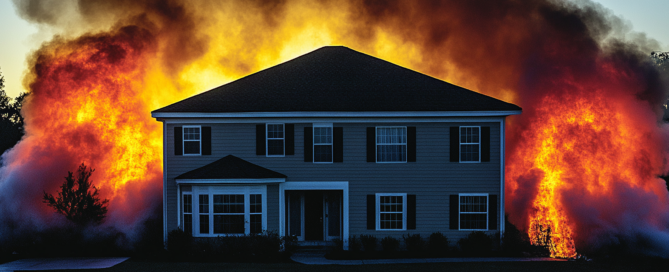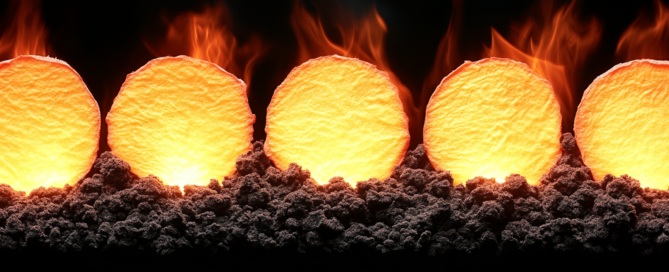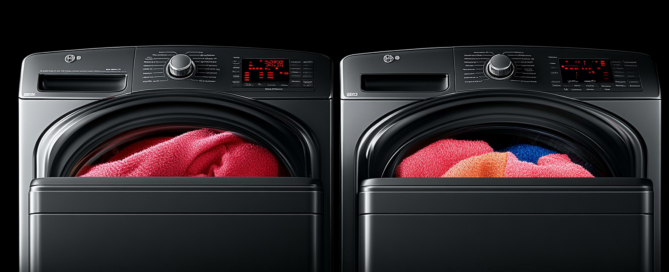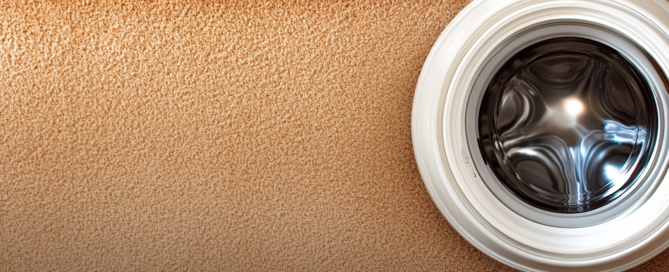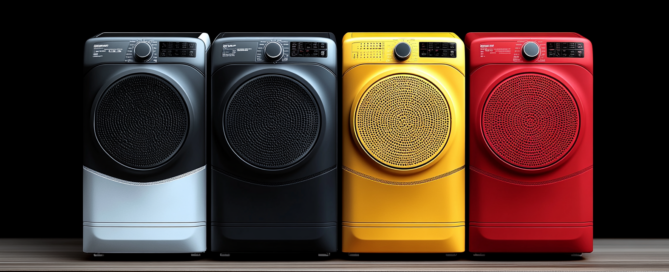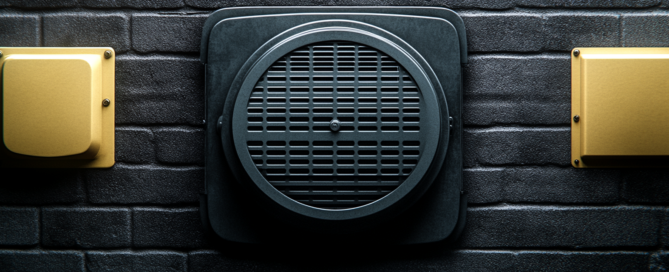- Dryer Cavity Cleaning
- Dryer Fire Prevention Tips
- Dryer Maintenance & Repair
- Dryer Tune Up
- Dryer Vent Cleaning
- Scheduling & Process
- Warranties and Guarantees
Yes! When the airflow is restricted by lint buildup, it forces the heated air into the dryer cavity where lint is also deposited. That overheating affect in the dryer cavity can easily ignite the lint built up on top of the heating element, or gas burners.
It’s always helpful to clear the path to the appliances or vents that we will need to service. Otherwise, we can adapt to most situations.
There are services we offer for refrigerators to clean the dust from the condenser coil. We can also clean debris traps on some washer pumps.
A funny smell from the dryer could be caused by lint buildup, trapped debris, or even worn-out electrical components. It’s best to have a professional inspect your dryer to rule out any hazards.
If your dryer is not working right, it could be due to issues with the vent, motor, or heating element. Regular maintenance and inspection can help diagnose and resolve these problems.
Signs of a broken dryer include unusual noises, long drying times, or stopping mid-cycle. If you notice any of these, an inspection by a professional can determine whether repairs or replacement are necessary.
Odd noises from the dryer could be caused by loose or worn parts, such as the belt, rollers, or bearings. It’s best to address these noises quickly to prevent further damage.
We go through all the moving parts of the dryer to inspect components condition and productivity. Most people will see a savings on the power bill when the dryer isn’t working as hard.
Dryer vent cleaning is typically around 30-45 minutes. If there is an additional dryer cavity cleaning, it may take 30-60 more minutes. Air duct cleaning can take 2-4 hours on average. Other services vary.
Yes, provided our service schedule can accommodate it.
Yes! Ask me about our annual service plan.
When the airflow is restricted by lint buildup, it forces the heated air into the dryer cavity where lint is also deposited. That overheating affect in the dryer cavity can easily ignite the lint built up on top of the heating element, or gas burners.
Have your dryer vent cleaned at least 1 to 2 years. Also making sure the dryer cavity is cleaned of all the lint buildup inside.
You can call or text us, or book online.
Yes. We are flexible to your situation and needs. We would appreciate at least 24 hours’ notice.
We recommend a few days at a minimum. You can easily book online and choose a date and time that is open that works for you.
First and last name, email, mobile number, and home address.
Yes, if our schedule allows, we’ll try to fit you in!
If your dryer is blowing cold air, there may be an issue with the heating element, thermostat, or airflow. A technician can diagnose the problem and get your dryer heating properly again.
Black marks on clothes may indicate a drum seal problem or a misaligned part. It’s best to have the dryer inspected to prevent further damage to your clothing.
Regular vent cleaning and annual tune-ups ensure the dryer works efficiently, reducing energy consumption. Using shorter cycles and drying similar fabrics together also helps.
While many dryers can be repaired, a dryer older than 10-15 years may not be worth the cost of repairs. A professional inspection can help you decide if replacement is a better option.
While some dryer maintenance tasks are manageable, cavity cleaning requires specialized tools and expertise to safely access and clean internal parts. Professional technicians ensure thorough lint removal without damaging components. Attempting DIY cleaning without proper knowledge can lead to incomplete cleaning or, worse, accidental damage.
Cleaning the lint trap removes visible lint after each load, but dryer vent cleaning involves removing lint buildup from the exhaust duct. Both are important for efficient drying and safety.
A musty smell can result from lint or moisture trapped in the dryer vent. A thorough vent cleaning can eliminate the odor and prevent future buildup.
A dryer tune-up is an in-depth maintenance service that inspects, cleans, and services critical dryer components to ensure the appliance runs efficiently and safely. Unlike basic cleaning, a tune-up covers everything from drum belts to motor mounts, helping to prevent fire risks and extend the dryer’s lifespan.
While vent cleaning removes lint buildup to improve airflow, a professional dryer tune-up addresses the entire dryer system. Technicians check moving parts, seals, and connections, ensuring the dryer operates safely and efficiently, minimizing energy costs and reducing the risk of breakdowns.
Yes. A well-maintained dryer operates efficiently, which means clothes dry faster. This saves time and helps prevent clothes from overheating or wearing out prematurely.
Regular tune-ups significantly reduce fire risks by ensuring proper airflow and identifying any worn parts that could potentially overheat or cause sparks. Dryer fires are often caused by neglected maintenance.
Scheduling is easy! You can contact us by phone or book online. Our team will work with you to find a convenient time, and most tune-ups can be completed in just one appointment.
Vent cleaning removes lint from the exhaust ducts that carry hot air out of the dryer, while cavity cleaning targets the interior of the appliance itself. Both are crucial for fire safety and efficiency. Vent cleaning prevents airflow blockages, but cavity cleaning addresses the areas where lint accumulates and poses direct fire risks. By combining these services, you maximize safety and appliance performance.
Signs include longer drying times, excess heat in the laundry room, unusual noises, and burning or musty smells during operation. These symptoms often point to significant lint buildup within the dryer, which can hinder performance and increase the risk of fires. Regular cavity cleaning helps prevent these issues from escalating into safety hazards.
On average, a dryer tune-up takes about one hour. However, this may vary slightly depending on the dryer model and its condition. We offer flexible scheduling to make this process convenient for you.
Technicians clean the dryer drum, heating elements, motor area, blower, and any other parts where lint buildup is common. Each component is carefully inspected, and all accessible lint and debris are removed. This thorough approach ensures safe, efficient operation and extends the lifespan of the dryer.
After the tune-up, you’ll receive a detailed report covering the condition of each component, any adjustments made, and recommendations for further repairs or parts that may need replacement soon.
If a serious issue is detected, the technician will inform you immediately and provide recommendations. Some repairs can be done on-site, while others may require specific parts or additional service.
Lint is highly flammable, and when it accumulates within the dryer cavity, it creates a combustible environment. Overheated components or a spark can ignite the lint, leading to a fire. Regular cavity cleaning removes this buildup, reducing fire risks and keeping your appliance operating safely.
A tune-up covers vital parts like the drive belt, drum rollers, blower wheel, door seals, and vent connections. Each component is examined for wear and potential issues, with technicians cleaning, adjusting, and lubricating as necessary to keep the dryer running smoothly.
Ideally, a dryer tune-up should be done annually, especially for households with heavy dryer usage. Regular maintenance can prevent expensive repairs and help avoid hazardous conditions that may lead to dryer fires.
Common signs include unusual noises, longer drying times, hot laundry rooms, musty or burning odors, mid-cycle stops, and visible wear on the power cord. Any of these can mean your dryer needs professional servicing.
By inspecting and maintaining all moving parts, a tune-up reduces friction and ensures optimal airflow, which helps the dryer operate more efficiently, saving energy and lowering utility bills over time.
Absolutely. Regular tune-ups catch wear-and-tear issues early, reducing strain on components. This maintenance helps prolong the life of your dryer and minimizes costly repairs.
Yes. Even new dryers benefit from routine tune-ups, as regular maintenance helps prevent small issues from becoming larger problems, ensuring the appliance operates safely and efficiently from the start.
Without tune-ups, dryers accumulate wear and lint buildup, which can lead to increased energy consumption, breakdowns, and even fire hazards. Neglecting maintenance often results in unexpected repairs and reduced dryer lifespan.
For most households, it’s recommended to schedule a dryer cavity cleaning annually, or every 18 months for those with moderate dryer use. If your household uses the dryer frequently—such as families with children or shared living situations—consider cavity cleaning every six months to a year to prevent excessive buildup.
Yes, grinding noises often indicate that internal parts like rollers or bearings are worn out. An inspection can identify the specific component in need of repair.
If your dryer gets hot but clothes don’t dry, it might be due to a blocked vent, which restricts airflow. Cleaning the dryer vent can resolve this issue and improve drying efficiency.
Cavity cleaning is a specialized service that goes beyond typical maintenance tasks, like cleaning the lint trap or vent. Standard maintenance doesn’t reach the internal areas of the dryer where lint can accumulate. Scheduling professional cavity cleaning ensures these hidden areas are thoroughly cleaned.
Common issues include clogged vents, worn-out parts, and faulty heating elements. Regular maintenance can prevent these issues.
Yes, by reducing strain on internal components and preventing overheating, cavity cleaning extends the lifespan of your dryer. Lint buildup can cause wear and tear on parts like the motor and heating elements. Keeping these areas clean minimizes damage, helping you get more years out of your appliance.
Yes, excessive lint buildup in the dryer cavity can lead to overheating, which can damage fabrics, fade colors, and shorten the life of your clothes. A clean dryer cavity helps maintain even heat distribution, preserving the quality of your clothing over time.
No, even newer dryers can benefit from cavity cleaning, especially if they are used frequently. Lint accumulation is a natural byproduct of drying clothes and can start posing risks relatively quickly. Routine cavity cleaning, regardless of the dryer’s age, helps maintain safety and efficiency.
Yes, removing lint and debris from the dryer cavity improves airflow, allowing your dryer to operate more efficiently. A clean dryer doesn’t have to work as hard to dry clothes, leading to faster drying times and lower energy consumption, which can save you money on utility bills.
Lint buildup in dryer cavities is a leading cause of dryer fires. When lint accumulates around heating elements or other hot parts of the dryer, it can ignite. Poor maintenance and failure to clean both the vent and cavity regularly contribute to this risk. Regular cavity cleaning is one of the most effective ways to prevent dryer-related fires.
A typical dryer cavity cleaning takes around 30-60 minutes, depending on the appliance’s condition and the level of lint buildup. Our technicians conduct a comprehensive inspection and cleaning, ensuring all accessible areas are free of lint and debris to optimize dryer performance and safety.
A funny smell coming from the clothes dryer could indicate overheating, burning lint, or trapped debris. For safety, stop using the dryer and schedule an inspection to prevent potential hazards.
A dryer stopping mid-cycle could be due to overheating or a faulty thermostat. Allow the dryer to cool, but if the problem persists, consider having a technician inspect it.
A whining noise from the dryer may indicate worn or damaged components, such as the belt or motor bearings. This issue can be resolved with a professional inspection and possible part replacement.
A clunking sound could be due to loose drum rollers or a damaged belt. An inspection and maintenance can resolve these noises.
If your dryer is hot but clothes stay damp, it’s likely due to poor airflow from a blocked vent or an issue with the heating system.
A burning smell from the dryer can be caused by trapped lint or an overheating motor. It’s best to stop using the dryer and have it checked out.
Professional cavity cleaning ensures thorough removal of lint and debris from your dryer’s internal components. Technicians have specialized tools and experience to access hard-to-reach areas without causing damage. DIY methods often leave behind lint or can harm the dryer’s components, leading to costly repairs.
What should I do? Poor drying despite heat often points to restricted airflow. Vent cleaning can restore airflow and improve drying results.
Overheating can be due to a clogged vent, a failing thermostat, or a broken heating element. A service technician can diagnose the cause.
A loud banging noise from the dryer can be due to worn-out drum rollers, a damaged drive belt, or loose components. An inspection can pinpoint the exact cause and resolve it before more damage occurs.
A burning smell is not normal and could indicate overheating or lint caught near the heating element. Turn off the dryer and have it inspected immediately.
Frequent shut-offs could indicate overheating, usually due to a clogged vent or faulty thermostat. It’s best to have a professional check it out to prevent potential fire hazards.
Yes, a dryer that isn’t maintained—especially if the vent isn’t cleaned regularly—can overheat and cause a fire. Scheduling annual maintenance significantly reduces this risk.
Funny sounds from the dryer often point to worn-out parts, such as the blower wheel or drum bearings. Scheduling a dryer tune-up can help pinpoint and resolve these issues.
If your dryer runs but doesn’t dry, the vent may be blocked, or the heating element may be malfunctioning. A professional cleaning or inspection can diagnose and resolve the problem.
A dryer inspection includes checking the vent, motor, heating elements, and electrical components. This ensures the dryer is operating safely and efficiently.
Even with regular lint trap cleaning, lint can accumulate in the vent or dryer cavity, affecting performance. A thorough dryer vent cleaning can restore airflow and efficiency.
Yes, many service providers offer dryer problem inspections to identify issues like lint buildup, worn parts, or electrical malfunctions.
If your dryer isn’t performing well and it’s relatively new, professional diagnostics can help determine if it’s repairable or if replacement is more cost-effective.
If your dryer is only partially drying clothes, it could be due to a clogged vent or malfunctioning heating elements. Scheduling a vent cleaning or inspection can improve performance.
An overly hot dryer might signal a blocked vent, overworking the appliance. Having the vent cleaned can reduce heat buildup and improve safety.
Regular dryer inspections are recommended once a year to catch issues early and maintain safe operation.
Signs of a clogged dryer vent include longer drying times, excess heat, and lint around the dryer. Regular vent cleaning can prevent these issues.
If your dryer takes several cycles to fully dry clothes, it could mean the vent is blocked, restricting airflow. A vent cleaning can often solve this problem.
If your dryer takes too long to dry clothes, it may be due to a clogged dryer vent, reduced airflow, or a malfunctioning heating element. Scheduling a vent cleaning or inspection can help restore efficiency.
Usually not, but please reach out to us and if we can help, we will!
The clothes will not dry with one cycle, like it did when it was new.
The dryer vent being blocked is one of the main reasons for failures in the dryer. It could be a heating element, or the high-limit fuse going out. It will cause the dryer to overheat and force lint into the dryer cavity and could cause a fire.
Our standard price is $249, and a dryer cavity cleaning add-on is an additional $239. If there is a need to go on the roof, attic, or crawl space – that will carry an additional charge.
The standard is less than 30 feet. The shorter the better, and the fewer turns the better.
Dryer vents exhaust or exit to the outside of the house through the roof, or travel under the house to an outside termination. You can often find the exhaust next to the A/C unit outside, or straight up to the roof from the back of the dryer.
FEMA.gov recommends cleaning your dryer vent once annually, but it can depend on many variables. The number of people in the house causes the use of the dryer to go up. The length of the dryer vent pipe can factor into the amount of air being pushed from the dryer and will lose velocity and cause more lint to settle in the dryer vent. Anything over 30 feet can stress the dryer motor. A good rule of thumb is to not wait longer than 2 years for any size house or family.
FEMA.gov recommends once annually! It can depend on the amount of use the dryer has, and the size of the loads. It is a safe bet to not wait longer than 2 years for average use, but at least once annually for heavy use. Even every 6 months may be needed if your dryer is used in a business setting like a hair salon or pet grooming!
Dryer cavity cleaning targets the hidden spaces inside your dryer where lint and debris accumulate over time. While regular lint trap cleaning is helpful, it doesn’t address the buildup that occurs deeper within the appliance. Without periodic cavity cleaning, lint can gather in areas like the dryer drum, heating elements, and motor, increasing fire risk. Regular cavity cleaning minimizes fire hazards, boosts dryer efficiency, and prolongs appliance life.
Serving the communities of:
Kennewick | Pasco | Richland | West Richland | Finley | Burbank | Benton City | Prosser | Grandview | Connell
As the sole certified dryer exhaust technician recognized by CSIA.org in the Tri-Cities area, Paul brings a wealth of expertise to fire prevention. His primary focus lies in addressing the root cause of many residential fires: lint buildup in dryer cavities and vents. Through rigorous inspections and thorough cleanings, Paul ensures that families and businesses can enjoy peace of mind, knowing their properties are safeguarded against fire risks.






